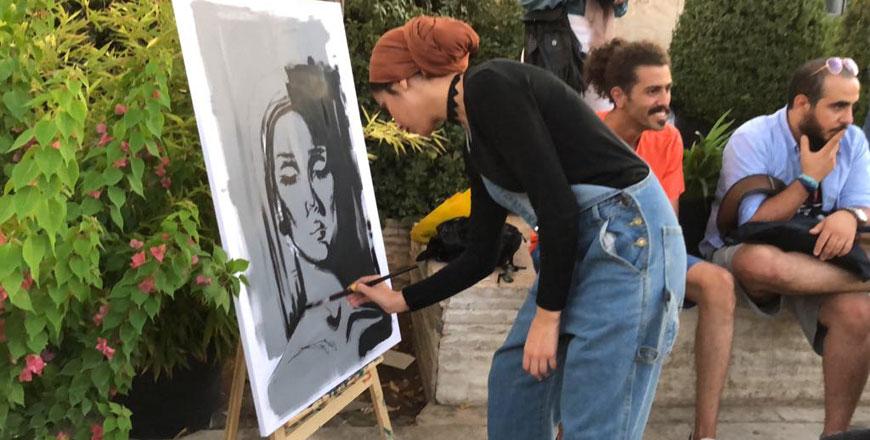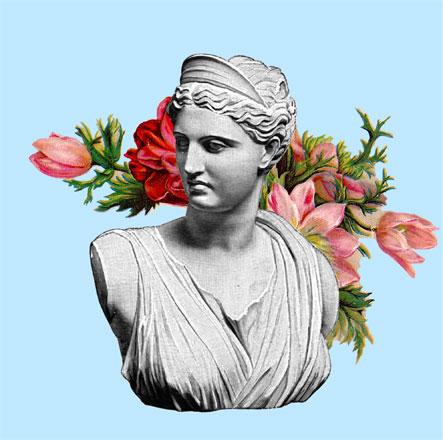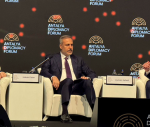You are here
Travelling sketchbooks to be showcased in Dubai after voyaging around world
By Yasmeen Kanaan - Mar 18,2019 - Last updated at Mar 20,2019

In this undated photo, Nahla Tabbaa holds Daftar Asfar. The first edition, along with other editions of the sketchbook, will go on display in Dubai, on Wednesday (Photo by Darah Ghanam)
AMMAN — Daftar Asfar, a collaborative and travelling sketchbook created by three women with roots in Jordan and Palestine has transcended geographical and cultural borders to make its way to Dubai, where its pages will be showcased for the first time at Art Dubai.
From preliminary sketches to rough and absent-minded scribbles, Daftar Asfar was founded in 2017 as a means for artists to explore their own practice, while allowing artists to exchange and collaborate — often without having met each other.
Inspired by the massive sketchbook collection in the Brooklyn Sketchbook Library in New York, Daftar Asfar with all its editions began to take on a life of its own and offer more than mere documentation.
The project, in all senses of the word “broad”, has embraced over 58 artists from various backgrounds and allowed them to share their stories and exploratory practices.
The first edition of Daftar was circulated amongst artists throughout Jordan, the UK and the UAE before the project evolved to such that additional sketchbooks were born, venturing to New Mexico and across the digital landscape through an online edition, according to a joint statement from the founders.
“The first sketchbook we used was a yellow sketchbook, and its was gifted to Nahla Tabbaa from her former colleague who is also one of the practicing artists; Nasir Nasrallah, and this is where the name Daftar Asfar came from,” Sarah Hatahet, one of the project’s co-founders told The Jordan Times.
“I want Daftar to reach artists who deserve publicity but don’t have the platform, or lack the confidence to speak about or show their own work. When we post a spread on our platform, we always aim to write a little narrative about the artwork and tag the artist to allow people to interact with the work,” Hatahet said.
Participating in the UAE NOW segment of Art Dubai which starts on Wednesday, Daftar Asfar aims to encourage and promote its own version of a creative and intimate dialogue between the artists’ works and the viewers during Art Dubai’s showcase of more than 90 galleries.
With an attempt to provide the audience with an interactive approach rather than just showcase their project; three of the previously featured artists will host activities, inviting audiences to explore the concept of sketchbooking and its function in the creative process.
“As the second edition was not physically intersecting, the only way to make it collaborative between the artists was to leave instructions for the next artist to carry on with,” Hatahet said. “Inspired by that, we will have a list of instructions with scrolls of paper, where visitors can draw taking inspirations from the instructions of follow the halo edition — the second edition.”
The follow the halo edition was designed on the basis of a more abstract methodology which was inspired by Hans Ulrich Obrist’s travelling project — Do It — an instruction manual that became a way to allow an artwork to evolve from one form into another, with each page resulting in a sort of metamorphosis, the statement said.
Additionally, co-founders Lena Kassicieh and Nahla Tabbaa, as well as the featured artists will take part in a reflective discussion to reach out to those who prefer a verbally-led dialogue.
Tabbaa, who used to live in Amman but is presently residing in the UAE, told The Jordan Times that she co-founded the project as a way to continue supporting her art community even while away.
“I felt like I had finally found a way to connect with my old and new communities and initiate collaborations and surprising works through a very humble tool — a travelling sketchbook,” Tabbaa said.
The co-founder added that the while publishing three sketchbooks and collaborating long-distance with Kassicieh and Hatahet, she discovered that “the art space no longer has to exist as a funded, frequently visited art institution”.
Kassicieh added that such a project, born out of determination has the momentum to be a tool to create a sense of community.
“For me, it’s been an experience that has reminded me how important accessible creative projects are, and it highlights the power of community in the art world,” Kassicieh told The Jordan Times. “We all want to be a part of something bigger than ourselves and to create art with other artists, and sharing in that personal process of creation is such a special and rare feeling.”
Related Articles
AMMAN — Sponsored by Amman Design Week, co-founders of an Amman-based furniture and interior design studio will “participate in Design Days
AMMAN — Launched a year ago by three friends willing to provide a solution to the lack of available spaces showcasing the creative side of t
AMMAN — Art lovers in Jordan and the region can now find easily accessible, free-of-charge information about the art-related events and acti

















